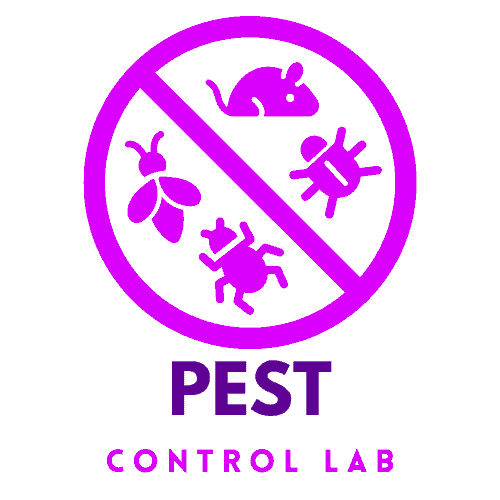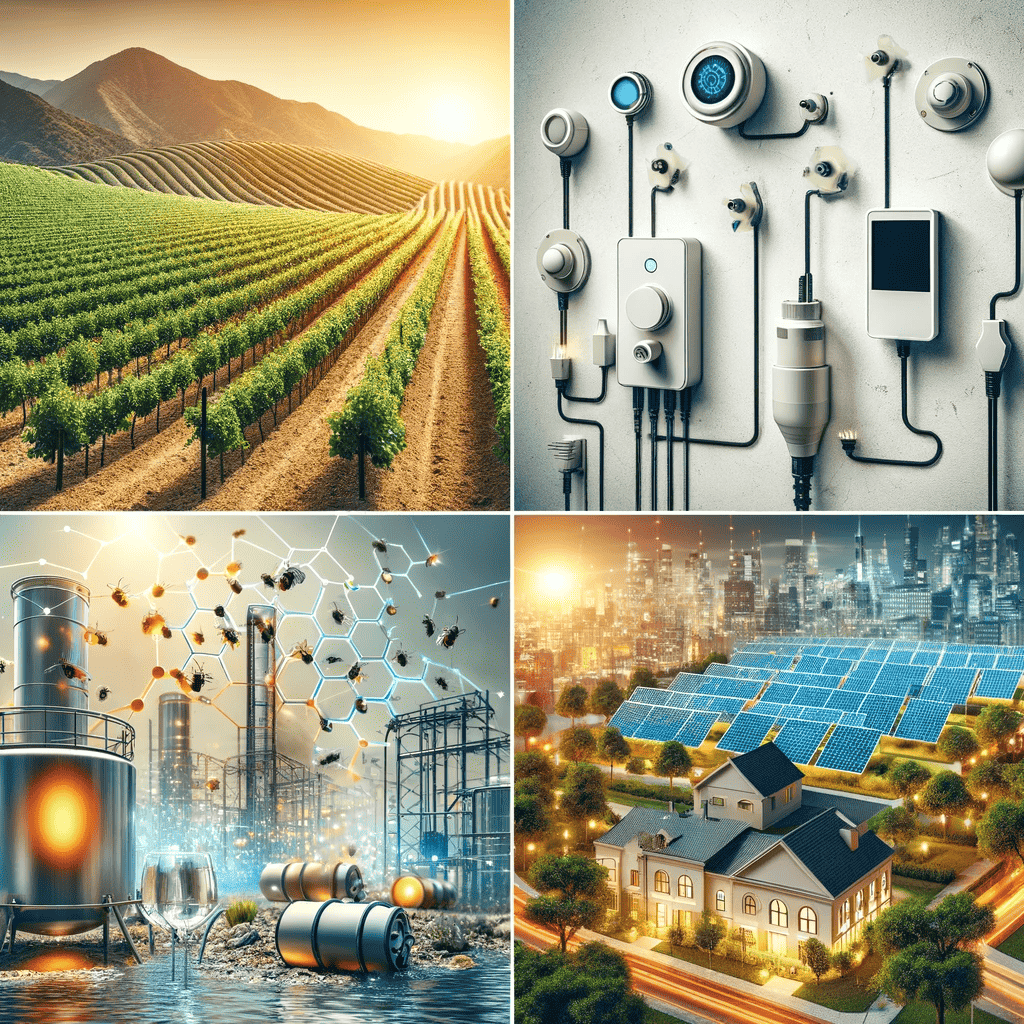Integrated Pest Management: The New Era of Pest Management
Imagine a world where pest control harmonizes with nature, where the buzzing bees and the crops coexist peacefully. This isn’t a far-fetched fantasy but the core of Integrated Pest Management (IPM). It’s more than just a method; it’s a philosophy that blends human well-being with environmental stewardship. In this exploration of IPM, we’ll unveil how this approach revolutionizes our battle against pests, ensuring safety for both people and the planet. Join us as we delve into the world of IPM, where every creature plays a role, and every action counts towards ecological balance.

The Evolution of Pest Management: From Chemicals to Ecology
Historical Shift in Pest Control Methods
Once upon a time, pest control was synonymous with chemical warfare. Fields and homes were battlegrounds where the only strategy was to attack with potent pesticides. However, this approach often overlooked the collateral damage to non-target species and ecosystems.
In the 1960s, Rachel Carson’s “Silent Spring” rang an alarm bell, awakening the world to the perils of indiscriminate chemical use. This pivotal moment marked a shift towards a more thoughtful approach to pest control. People began to question and challenge the traditional methods, seeking alternatives that were effective and kinder to the planet.
Rise of Ecological Awareness
As environmental consciousness grew, so did the understanding that pests are part of a larger ecological web. The indiscriminate use of chemicals disrupted this balance, often causing more harm than good.
This realization birthed Integrated Pest Management, a strategy rooted in ecological principles. It’s akin to being a gardener who knows how to eliminate weeds and understands the importance of nurturing the soil and its beneficial organisms. IPM is a sophisticated dance with nature, where the goal is to manage pests in a way that maintains ecological harmony.
The Core Principles of Integrated Pest Management

Understanding Pest Biology
At the heart of IPM lies a deep understanding of pest biology. Like detectives at a crime scene, IPM practitioners scrutinize pests’ life cycles, habitats, and behaviors. This knowledge is crucial, as it reveals the pest’s weaknesses and helps develop targeted effective control strategies.
Understanding pest biology isn’t just about knowing your enemy; it’s about respecting each organism’s role in the ecosystem. This knowledge empowers us to make informed decisions, ensuring that our actions align with the broader goal of ecological balance.
Monitoring and Decision-Making
Monitoring is the watchful eye of IPM, constantly surveying for pest presence. This vigilant tracking is not about launching an immediate attack but making informed decisions. Thresholds are established – a line in the sand, so to speak – that determine when and how to act.
This phase is akin to a doctor diagnosing a patient. Just as a physician wouldn’t prescribe medicine without understanding the ailment, IPM practitioners don’t take action unless there’s a real need. It’s a calculated, thoughtful approach that weighs the benefits and risks of any intervention.
Integrated Management Methods
IPM isn’t a one-size-fits-all approach. It’s a toolbox filled with various strategies – biological control, cultural practices, mechanical methods, and, when necessary, chemical interventions.
Imagine a gardener who uses a combination of healthy soil, beneficial insects, and the strategic planting of crops to manage pests. Chemicals are used as a last resort and in the most targeted and efficient way possible. This integrated approach ensures long-term pest control while safeguarding the health of the environment and people’s health.
IPM in Agriculture: Balancing Crop Protection and Sustainability
Strategies in Agricultural Integrated Pest Management
In the agricultural world, IPM is like a skilled farmer who uses a blend of tradition and innovation to protect crops. Crop rotation, for instance, is an age-old technique that naturally disrupts pest life cycles. Companion planting, where certain plants are grown together to deter pests, is another tool in the IPM arsenal.
Biological control is also a cornerstone of agricultural IPM. It’s akin to deploying an army of natural pest predators – ladybugs against aphids, for instance – turning nature’s mechanisms against pests. This method reduces reliance on chemical pesticides, fostering a healthier, more resilient ecosystem.
Case Studies in Effective Agricultural IPM
Consider the story of a vineyard implementing IPM. They introduce owls and raptors to control rodents, reducing the need for rodenticides. Cover crops are grown to enrich the soil and manage weeds, lessening herbicide use. Pheromone traps are used for insect monitoring, enabling targeted interventions.
These real-life examples demonstrate IPM’s effectiveness in agriculture. They show how understanding and working with natural systems can lead to sustainable pest management solutions that benefit crops and the environment.
Urban and Residential IPM: Challenges and Strategies

Integrated Pest Management Challenges in Urban Environment
Urban environments present a unique set of challenges for pest management. Dense populations, diverse habitats, and constant human activity create ideal conditions for pests like rodents and cockroaches. Managing these pests without harming the urban ecosystem requires a nuanced approach.
Integrated Pest Management in cities is like a tightrope walker, balancing effective control and environmental safety. It involves understanding urban landscapes as ecosystems, where every building, park, and sewer system plays a role in pest dynamics.
Strategies for Residential Areas
In residential settings, IPM emphasizes prevention and education. Homeowners are encouraged to eliminate food and water sources for pests, seal entry points, and maintain clean environments.
Education is key. When residents understand the importance of not leaving food out or managing waste properly, they become active participants in pest control. This community involvement is crucial for the success of IPM in residential areas, turning individual actions into collective impact.
The Role of Technology in Advancing Integrated Pest Management

Technological Innovations in IPM
The digital age has ushered in groundbreaking tools for IPM. Imagine drones equipped with cameras and sensors flying over fields, detecting pest infestations before they become visible to the naked eye. This is not science fiction but a reality in modern IPM practices.
Artificial Intelligence (AI) also plays a pivotal role. It analyzes pest data, predicts outbreaks, and suggests the most effective management strategies. This technological prowess enhances IPM’s efficiency, allowing for swift, targeted actions with minimal environmental impact.
Case Examples of Technology in Integrated Pest Management
In vineyards, sensors detect the exact moisture levels of soil, informing irrigation practices that discourage pest-friendly environments. In urban areas, smart traps send alerts when pests are captured, enabling precise monitoring and control.
These examples show how technology not only aids in pest detection but also in implementing a more nuanced, effective IPM strategy. Integrating tech tools makes IPM more precise, efficient, and environmentally friendly.
The Future of IPM: Trends and Predictions
Emerging Trends in Integrated Pest Management
As we look to the future, biological pest control emerges as a key trend. Using natural predators or pathogens to control pests, this method is gaining traction for its effectiveness and sustainability.
Another growing trend is the use of pheromones for pest control. These natural chemicals, which insects use to communicate, can be harnessed to disrupt pest mating patterns or lure them into traps. It’s a sophisticated approach that offers control without collateral environmental damage.
Predictions for Future Developments
The integration of big data and predictive analytics in IPM is likely to grow. By analyzing large datasets on weather patterns, pest life cycles, and crop health, IPM strategies can become more anticipatory, addressing pest issues before they escalate.
Another exciting development could be gene editing techniques like CRISPR to develop pest-resistant crop varieties, offering a new dimension to agricultural pest management.
Conclusion
Integrated Pest Management is not just a method; it’s a commitment to a more balanced, sustainable relationship with our environment. As we’ve seen, IPM integrates traditional wisdom with cutting-edge technology, creating a dynamic, practical approach to pest control. The future of IPM is bright, filled with innovative strategies that promise not only to manage pests but also to preserve the delicate ecological balance of our planet. Embracing IPM is a step towards a future where human well-being and environmental health are inextricably linked, guiding us toward a more sustainable, harmonious world.


